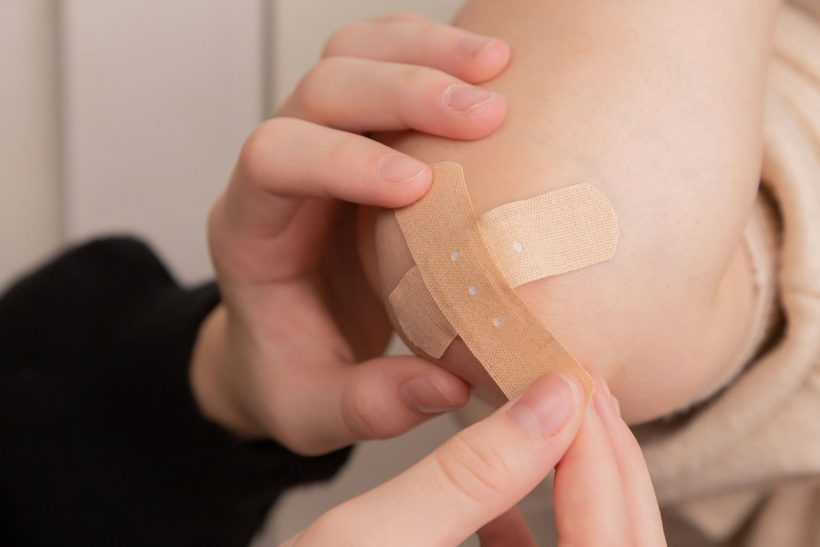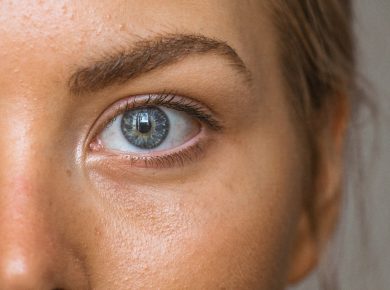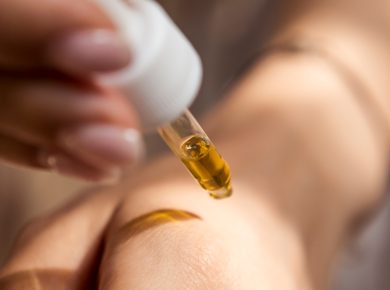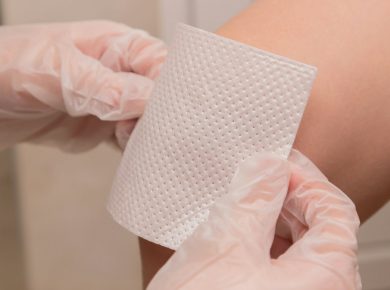Introduction to Second Skin Bandages
Second skin bandages are a modern solution for wound care, especially for tattoo aftercare. These innovative products create a moist environment that helps wounds heal faster while protecting them from outside germs. Unlike traditional methods like gauze or plastic wraps, second skin bandages let the skin breathe, which is essential for effective healing. This unique feature not only speeds up recovery but also reduces pain and discomfort during the healing process.
One major advantage of second skin bandages is their ability to minimize scabbing and peeling, common issues during tattoo healing. A study on tattoo aftercare shows that using products like Saniderm can significantly lower the risk of germs entering the wound, preventing infections and ensuring a vibrant, well-healed tattoo. The breathable and waterproof nature of these bandages allows oxygen to reach the wound while keeping harmful bacteria out, making them a great choice for tattoo lovers.
Proper application of second skin bandages is crucial for their effectiveness. This involves cleaning the wound thoroughly, applying the bandage smoothly, and ensuring it sticks well to the skin to prevent leaks. Following specific aftercare instructions is vital for maintaining the bandage’s integrity and promoting optimal healing outcomes, as highlighted in the FAQs on SecondSkin™ Tattoo Aftercare.
Additionally, the clear design of second skin bandages allows for easy monitoring of the healing process without frequent changes. This is especially helpful for those concerned about how their tattoos look while healing. By keeping a moist environment, second skin bandages not only speed up healing but also enhance comfort, making them a preferred choice for many.
In summary, second skin bandages mark a significant advancement in wound care, combining protection and healing efficiency. Their ability to create a healing-friendly environment while minimizing discomfort makes them essential for effective tattoo care. For more detailed guidance on tattoo aftercare, check out the comprehensive resources available in the Tattoo Aftercare guide. By understanding and using second skin bandages correctly, individuals can ensure a smoother and more successful healing journey.

Benefits of Second Skin Bandages
Second skin bandages have changed how we approach wound care, especially for tattoo aftercare. These advanced products create a moist environment that promotes faster healing while effectively protecting against outside germs. Unlike traditional methods that often use plastic wraps or petroleum-based products, second skin bandages allow the skin to breathe, which is crucial for effective healing. This unique feature significantly reduces the risk of scabbing and peeling, leading to a more vibrant and well-healed tattoo.
One of the main benefits of second skin bandages is their ability to lessen pain and discomfort during the healing process. A study on second skin bandages shows that these bandages create a protective barrier that shields the wound from irritants while keeping the area moisturized. This moisture retention is essential as it aids in the natural healing process, allowing the body to recover more efficiently.
Moreover, the transparent nature of second skin bandages allows for easy monitoring of the wound without frequent changes. This convenience is particularly beneficial for individuals who may be concerned about their tattoos’ healing progress. Proper application techniques are vital for maximizing the effectiveness of these bandages. Ensuring that the skin is clean and dry before application is crucial for optimal adhesion, which helps prevent leaks and enhances the bandage’s protective qualities, as highlighted in the Saniderm’s Tattoo Guide.
In addition to their protective features, second skin bandages significantly reduce the risk of infection. By providing a waterproof barrier, they prevent germs from entering the wound site, which is especially important for fresh tattoos. The Tattoo Aftercare guide emphasizes that using second skin bandages can help avoid complications such as scabbing, scarring, and potential loss of pigment or detail in the healed tattoo.
In conclusion, second skin bandages represent a significant advancement in wound care, combining protection and healing efficiency in one product. Their ability to create a moist environment, minimize pain, and reduce the risk of infection makes them an ideal choice for tattoo aftercare and other skin injuries. For anyone looking to ensure optimal healing outcomes, incorporating second skin bandages into their aftercare routine is a wise decision.
Types of Second Skin Bandages
Second skin bandages are an innovative solution in wound care, especially beneficial for healing tattoos and other skin injuries. These advanced products create a moist environment that promotes faster healing while protecting the wound from external contaminants. Unlike traditional bandaging methods, second skin bandages are designed to be breathable and waterproof, allowing oxygen to reach the wound while keeping harmful bacteria out. This unique feature significantly reduces the risk of infection and enhances comfort during the healing process.
One of the most popular types of second skin bandages is Saniderm, specifically engineered for tattoo aftercare. According to the Saniderm Tattoo Guide, these bandages are permeable to gases, allowing the skin to breathe while preventing moisture loss. This is crucial for effective healing, as it minimizes scabbing and peeling, leading to a more vibrant and well-healed tattoo. Proper application is essential; the skin should be clean and dry before applying the bandage to ensure optimal adhesion.
The benefits of using second skin bandages extend beyond just tattoo care. They are also effective for minor cuts, abrasions, and blisters. As highlighted in the SecondSkin™ Tattoo Aftercare FAQs, these bandages help reduce pain and discomfort during the healing process. Their transparent design allows for easy monitoring of the wound without the need for frequent changes, making them a convenient option for patients.
When applying a second skin bandage, it is important to follow specific aftercare instructions. For instance, after applying the bandage, it should be left on for about 3 to 6 days, depending on the type of wound and the bandage used. If irritation or fluid buildup occurs, it may be necessary to remove the bandage sooner. The Tattoo Aftercare guide emphasizes the importance of maintaining cleanliness and moisture during the healing process to avoid complications.
In summary, second skin bandages represent a significant advancement in wound care, combining protection and healing efficiency. Their ability to create a moist environment while allowing the skin to breathe makes them an ideal choice for tattoo aftercare and other skin injuries. For anyone considering their use, understanding the proper application and aftercare techniques is crucial for achieving optimal healing outcomes.
Proper Application and Use of Second Skin Bandages
Second skin bandages are a revolutionary advancement in wound care, particularly beneficial for tattoo aftercare and other skin injuries. These bandages create a moist environment that promotes faster healing while protecting the wound from external contaminants. Unlike traditional methods, such as plastic wrap or petroleum-based products, second skin bandages allow the skin to breathe, which is crucial for effective healing. This unique feature significantly reduces pain, minimizes scabbing, and enhances comfort during the recovery process.
To properly apply a second skin bandage, start by ensuring that the skin is clean and dry. This step is essential for optimal adhesion. According to the FAQs – SecondSkin™ Tattoo Aftercare, the application process involves gently placing the bandage over the wound and smoothing it out to eliminate air bubbles. This technique not only secures the bandage but also prevents leakage, ensuring that the wound remains protected.
Once applied, it is important to follow specific aftercare instructions to maintain the integrity of the bandage. For instance, the Saniderm’s Tattoo Guide recommends keeping the bandage on for 3 to 6 days, depending on the healing progress. If irritation or fluid buildup occurs, it is advisable to remove the bandage sooner. After removal, gently wash the area with water and unscented soap, ensuring that all soap is rinsed off completely.
The benefits of using second skin bandages extend beyond just tattoo care. They are also effective for minor cuts, abrasions, and blisters, providing a protective barrier that reduces the risk of infection. As highlighted in the Tattoo Aftercare guide, these bandages help to avoid scabbing altogether, allowing the skin to heal naturally while keeping it moisturized.
In summary, the proper application and use of second skin bandages can significantly enhance the healing process. By creating a protective, breathable environment, these bandages not only promote faster recovery but also minimize discomfort and the risk of complications. For anyone considering tattoo aftercare or looking for effective wound care solutions, second skin bandages are an excellent choice.
Second Skin Bandages for Different Wound Types
Second skin bandages are innovative wound care products designed to cater to various wound types, including tattoos, minor cuts, abrasions, and blisters. These bandages create a moist environment that is essential for promoting faster healing while providing a protective barrier against external contaminants. Unlike traditional methods that often suffocate the skin, second skin bandages allow oxygen to reach the wound, which is crucial for effective healing. This unique feature significantly reduces pain, minimizes scabbing, and enhances overall comfort during the recovery process.
When it comes to tattoo aftercare, second skin bandages, such as those from Saniderm, are particularly beneficial. They are engineered to be breathable and waterproof, allowing the skin to breathe while keeping contaminants out. This method not only helps in preventing scabbing but also ensures that the tattoo retains its vibrancy and detail. Proper application is key; it involves cleaning the tattooed area, applying the bandage smoothly, and ensuring it adheres well to the skin to prevent leakage. Following the guidelines provided by Tattoo Aftercare is essential for maximizing the benefits of these bandages.
For other types of wounds, second skin bandages can be applied similarly. They are particularly effective for minor cuts and abrasions, as they provide a protective barrier that reduces pain and discomfort. The application process is straightforward: ensure the skin is clean and dry before applying the bandage for optimal adhesion. Their transparent design allows for easy monitoring of the wound without the need for frequent changes, making them a convenient option for patients. As noted in the FAQs – SecondSkin™ Tattoo Aftercare, these bandages significantly reduce the risk of scabbing and scarring, making them ideal for various skin injuries.
In conclusion, second skin bandages represent a significant advancement in wound care, combining protection and healing efficiency. Whether for tattoo aftercare or treating minor wounds, these bandages offer a modern solution that promotes optimal healing outcomes. By following proper application techniques and aftercare instructions, users can ensure that they maximize the benefits of second skin bandages, leading to a more comfortable and effective healing process.
Comparing Second Skin Bandages to Traditional Dressings
When comparing second skin bandages to traditional dressings, the differences in functionality and effectiveness become clear. Second skin bandages, such as those offered by Saniderm, are designed to create a moist environment that promotes faster healing while protecting the wound from external contaminants. This is a significant advancement over traditional dressings, which often rely on materials like gauze or plastic wrap that can suffocate the skin and increase the risk of infection.
One of the primary benefits of second skin bandages is their ability to reduce pain and discomfort during the healing process. According to a study on second skin bandages, these bandages minimize scabbing and peeling, leading to a more vibrant and well-healed tattoo. In contrast, traditional dressings can often lead to increased scabbing, which not only prolongs the healing process but can also affect the final appearance of the tattoo.
The application of second skin bandages is straightforward and user-friendly. They require clean and dry skin for optimal adhesion, and their transparent nature allows for easy monitoring of the wound without the need for frequent changes. This is particularly advantageous for individuals healing tattoos, as it reduces the need for constant dressing changes that can disrupt the healing process. As noted in the Tattoo Aftercare guide, proper application techniques are essential for maximizing the effectiveness of second skin bandages. This includes ensuring the bandage adheres well to the skin to prevent leakage and maintaining cleanliness during the healing period.
Moreover, second skin bandages are engineered to be breathable and waterproof, allowing oxygen to reach the wound while keeping contaminants out. This is crucial for effective healing, as highlighted in the Saniderm Tattoo Guide. Traditional dressings, on the other hand, often trap moisture and bacteria, which can lead to complications such as infections or delayed healing.
In summary, second skin bandages offer a modern solution for wound care that significantly outperforms traditional dressings. Their ability to create a moist healing environment, reduce pain, and protect against contaminants makes them an ideal choice for tattoo aftercare and other skin injuries. For anyone considering their options for wound care, the advantages of second skin bandages are compelling and well-supported by research.

Latest Research and Innovations in Second Skin Technology
Second skin technology has emerged as a revolutionary advancement in wound care, particularly in the realm of tattoo aftercare. These innovative bandages, such as those offered by Saniderm, are designed to create a moist environment that promotes faster healing while protecting the wound from external contaminants. Unlike traditional methods that often involve plastic wraps or petroleum-based products, second skin bandages allow oxygen to reach the wound, significantly reducing the risk of infection and enhancing the healing process.
One of the key benefits of second skin bandages is their ability to minimize pain and discomfort during recovery. According to research, these bandages can reduce scabbing and peeling, leading to a more vibrant and well-healed tattoo. The transparent nature of second skin bandages allows for easy monitoring of the healing process without the need for frequent changes, making them a convenient option for patients. Proper application techniques are crucial; the skin must be clean and dry to ensure optimal adhesion, as highlighted in the FAQs – SecondSkin™ Tattoo Aftercare.
To maximize the effectiveness of second skin technology, it is essential to follow specific aftercare instructions. For instance, after applying a second skin bandage, it is recommended to keep it on for 3 to 6 days, depending on the healing progress. If irritation or fluid buildup occurs, the bandage can be removed sooner. After removal, gentle washing with unscented soap and water is advised, followed by the application of a thin layer of lotion to keep the area moisturized without clogging pores. This approach not only aids in healing but also helps prevent scarring, as noted in the Tattoo Aftercare guide.
In summary, second skin technology represents a significant leap forward in tattoo aftercare and wound management. By creating an optimal healing environment, these bandages enhance comfort and reduce recovery time. As more individuals seek effective solutions for tattoo aftercare, the adoption of second skin bandages is likely to increase, making them a staple in modern wound care practices. For those interested in learning more about the application and benefits of second skin bandages, resources like Tattoo Aftercare Second Skin on Fresh Black & Gray provide valuable insights and practical tips.
Care and Maintenance of Second Skin Bandages
Second skin bandages are an innovative solution for wound care, particularly beneficial for tattoo aftercare. These advanced products create a moist environment that promotes faster healing while protecting the wound from external contaminants. Unlike traditional methods, such as plastic wrap or petroleum-based products, second skin bandages allow the skin to breathe, which is crucial for effective healing. This unique feature significantly reduces pain, minimizes scabbing, and enhances comfort during the recovery process, making them an ideal choice for tattoo enthusiasts and anyone with skin injuries.
To ensure optimal results with second skin bandages, proper care and maintenance are essential. First, before applying the bandage, it is vital to clean the area thoroughly. Use a gentle, unscented soap to wash the tattoo or wound, ensuring that all dirt and bacteria are removed. After cleaning, allow the skin to dry completely. This step is crucial because moisture can hinder the bandage’s adhesion and effectiveness.
When applying the second skin bandage, make sure to do so smoothly, avoiding any wrinkles or air bubbles. The bandage should adhere well to the skin to prevent leakage and ensure that it stays in place. According to the FAQs – SecondSkin™ Tattoo Aftercare, these bandages are designed to protect wounds while allowing the skin to breathe, which is essential for effective healing.
After applying the bandage, it is recommended to leave it on for 3 to 6 days, depending on the healing progress. If the skin appears irritated or if there is fluid buildup, it is advisable to remove the bandage sooner. When it’s time to remove the bandage, do so gently, ideally after a warm shower, to minimize discomfort. Clean the area again with unscented soap and water, and allow it to dry before applying any aftercare products.
For ongoing care, apply a thin layer of unscented lotion to keep the area moisturized, but avoid over-moisturizing, as this can impede the natural healing process. It is also crucial to avoid sun exposure and tight clothing on the tattooed area during the healing phase. Following these guidelines will help ensure that your tattoo heals beautifully and maintains its vibrancy.
For more detailed information on tattoo aftercare, refer to the How to Take Care of a New Tattoo | Saniderm’s Tattoo Guide and the Tattoo Aftercare guide, which provide comprehensive insights into the best practices for using second skin bandages effectively.

Precautions and Considerations
When considering the use of second skin bandages for tattoo aftercare, it is essential to understand the precautions and considerations that can significantly impact the healing process. Second skin bandages, such as those offered by Saniderm, are designed to create a moist environment that promotes faster healing while protecting the tattoo from external contaminants. This innovative approach contrasts sharply with traditional methods that often suffocate the skin, increasing the risk of infection and complications.
Proper Application Techniques
To maximize the benefits of second skin bandages, proper application is crucial. Begin by ensuring that the tattooed area is clean and dry. This step is vital for optimal adhesion and to prevent any potential irritation. According to the FAQs on SecondSkin™ Tattoo Aftercare, the bandage should be applied smoothly to avoid air pockets, which can lead to discomfort and hinder healing. It is also important to avoid applying the bandage to surrounding skin to prevent irritation.

Monitoring and Maintenance
Once the second skin bandage is in place, it is essential to monitor the tattoo for any signs of irritation or fluid buildup. If the skin appears increasingly red or irritated, it may be necessary to remove the bandage sooner than the recommended 3 to 6 days. The Tattoo Aftercare guide emphasizes that maintaining cleanliness is crucial during this period. After removing the bandage, gently wash the tattoo with water and unscented soap, ensuring all soap is rinsed off completely.
Avoiding Common Pitfalls
While second skin bandages offer numerous benefits, there are common pitfalls to avoid. For instance, over-moisturizing can hinder the natural healing process. It is advisable to apply a thin layer of unscented lotion only after the bandage is removed. Additionally, avoid using petroleum-based products like Aquaphor, as they can clog pores and slow healing. Instead, trust your body’s natural healing capabilities and stay hydrated to support recovery.
Conclusion
In summary, using second skin bandages for tattoo aftercare can significantly enhance the healing process when applied correctly. By following proper application techniques, monitoring the tattoo, and avoiding common mistakes, individuals can enjoy a vibrant and well-healed tattoo. For more detailed information on second skin bandages and their benefits, refer to the Saniderm Tattoo Guide.

Conclusion: The Future of Wound Care with Second Skin Technology
The future of wound care is being revolutionized by second skin technology, which offers a promising alternative to traditional bandaging methods. These advanced wound care products are designed to create a moist environment that significantly enhances the healing process. By providing a protective barrier against external contaminants while allowing the skin to breathe, second skin bandages are particularly effective for various types of wounds, including tattoos, minor cuts, abrasions, and blisters.
One of the standout features of second skin bandages is their ability to reduce pain and discomfort during recovery. According to a study on second skin bandages, these products minimize scabbing and promote faster healing by maintaining a moist environment. This is crucial for effective recovery, as it helps to prevent the formation of scabs that can lead to scarring. The transparent nature of these bandages allows for easy monitoring of the wound without the need for frequent changes, making them a convenient option for patients.
Proper application techniques are essential for maximizing the benefits of second skin bandages. As highlighted in the Saniderm’s Tattoo Guide, it is important to ensure that the skin is clean and dry before applying the bandage. This not only enhances adhesion but also reduces the risk of infection. Following the initial application, it is recommended to keep the bandage on for several days, allowing the skin to heal without interference from external factors.
Moreover, the use of second skin technology is not limited to tattoo aftercare. It has broader applications in wound management, providing a safe and effective solution for various skin injuries. The Tattoo Aftercare guide emphasizes the importance of using appropriate aftercare products and avoiding common pitfalls that could hinder healing. By adopting second skin technology, patients can experience a more comfortable and efficient healing process.
In conclusion, the integration of second skin technology into wound care represents a significant advancement in medical practices. As more individuals become aware of its benefits, we can expect to see a shift towards these innovative solutions in both clinical and personal care settings. For those interested in exploring the advantages of second skin bandages further, resources like SecondSkin™ Tattoo Aftercare provide valuable insights into their application and effectiveness.





